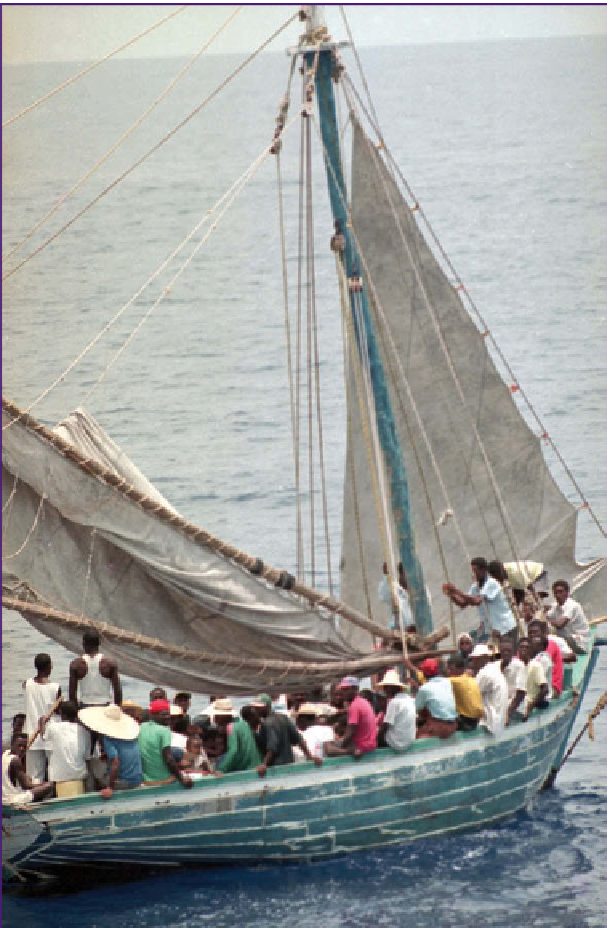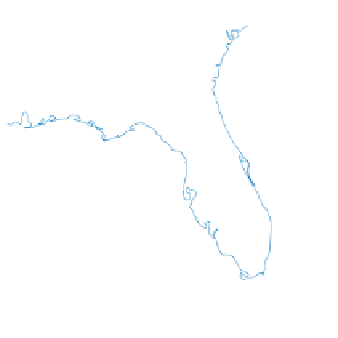Geography Reference
In-Depth Information
CHAPTER
3
Migration
Field Note
Risking Lives for Remittances
In 1994, I was on my way to
Rosenstiel Marine Center on
Virginia Key, off the coast of
Miami, Florida. I noticed an
overcrowded boat, with
about 70 people on board.
The Haitians were fl eeing
the most impoverished
country in the Western
Hemisphere. Most of the
would-be illegal immigrants
were men with perhaps half a
dozen women and as many chil-
dren. They jumped overboard prematurely when the
Coast Guard approached, and some undoubtedly lost
their lives; others made it to the beach and ran for
the road.
The Haitians the Coast Guard caught were sent
home to Haiti with other illegal Haitian immigrants.
The chance of getting caught is high, the travel is
treacherous, and hundreds die off the coast of
Florida each year. The hope of a job in the United
States and the lack of hope in their lives and homes
in Haiti compel them to try. The immigrants know
that if they make it to shore and can fi nd their way to
the homes of friends and family, they have a chance
to fi nd employment and live under the radar of the
Immigration and Naturalization Service (Fig. 3.1).
GEORGIA
80
°
W
ALABAMA
30
°
N
ATLANTIC
OCEAN
FLORIDA
Gulf of Mexico
Miami
Figure 3.1
Miami, Florida
. A sailboat carrying more than 100 Haitians
waits for the United States Coast Guard to pick them up after
fl eeing Haiti in June 1994.
© AP/Wide World Photos.
78
































































































